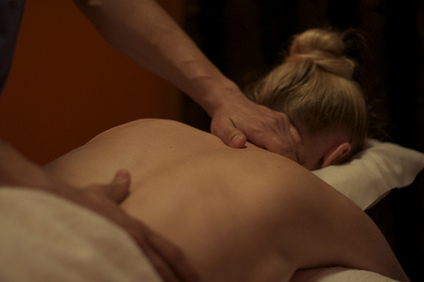Massage promotes growth of new mitochondria
About 18 million individuals undergo massage therapy annually in the U.S., making it the fifth most widely used form of complementary and alternative medicine.
Athletes will tell you massage is pain-relieving and recovery-promoting, and the average person can talk about how great her body feels after a massage.
But now there’s scientific evidence that on the cellular level, massage reduces inflammation and promotes the growth of new mitochondria in skeletal muscle. The research, involving scientists from the Buck Institute for Research on Aging and McMaster University in Hamilton Ontario appears in the February 1st online edition of Science Translational Medicine.
The study involved the genetic analysis of muscle biopsies taken from the quadriceps of eleven young males after they had exercised to exhaustion on a stationary bicycle. One of their legs was randomly chosen to be massaged. Biopsies were taken from both legs prior to the exercise, immediately after 10 minutes of massage treatment and after a 2.5 hour period of recovery.
Buck Institute faculty Simon Melov, PhD, was responsible for the genetic analysis of the tissue samples. “Our research showed that massage dampened the expression of inflammatory cytokines in the muscle cells and promoted biogenesis of mitochondria, which are the energy-producing units in the cells,” said Melov. He added that the pain reduction associated with massage may involve the same mechanism as those targeted by conventional anti-inflammatory drugs. “There’s general agreement that massage feels good, now we have a scientific basis for the experience,” said Melov.
Tarnopolsky says, “This study provides evidence that manipulative therapies, such as massage, may be justifiable in medical practice.” Visions of insurance-covered massages dance in our heads …
Image: ![]() Some rights reserved by Nick J Webb
Some rights reserved by Nick J Webb

